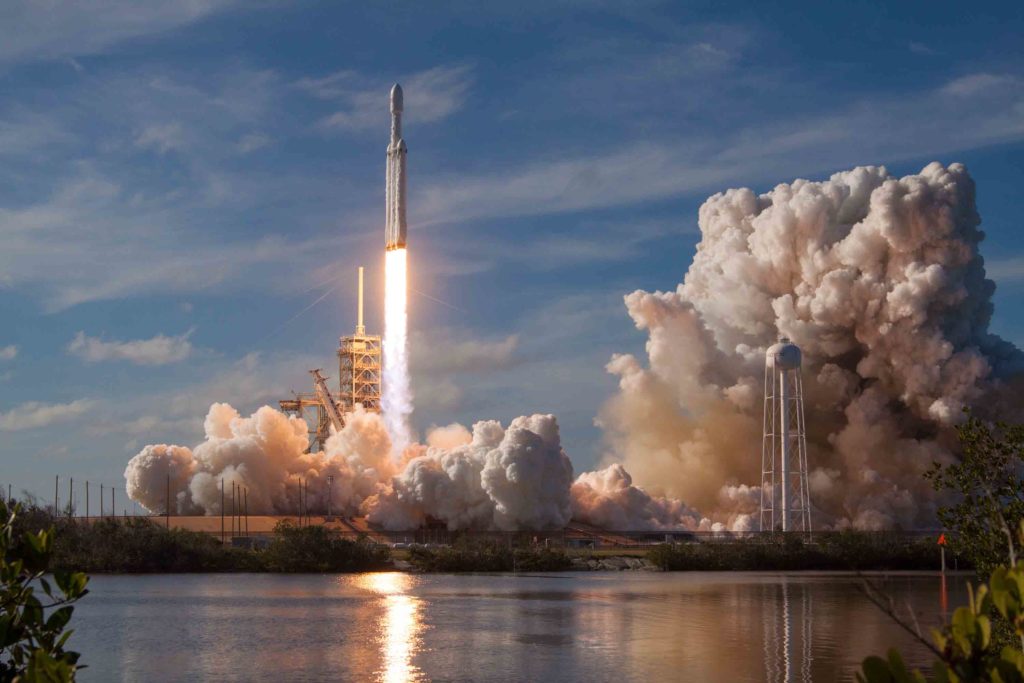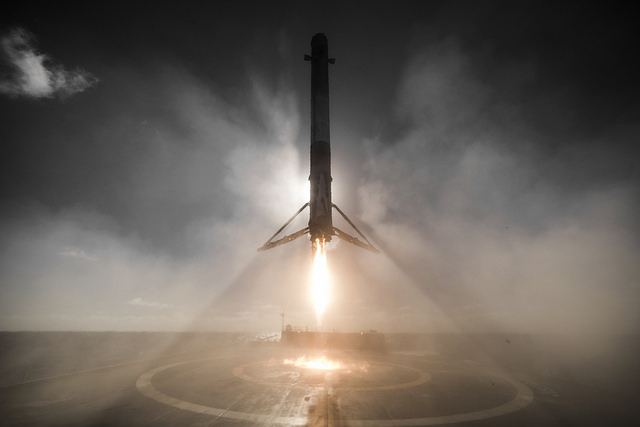On February 18th this year, Elon Musk changed space exploration forever. In a launch sequence of nail-biting intensity, millions of people around the world watched as SpaceX’s Falcon Heavy rocket blasted off from Cape Canaveral with Musk’s Tesla Roadster onboard.
The launch was YouTube’s second most watched live event (Felix Baumgartner’s stratospheric jump is number 1), and it’s easy to see why. Firing an electric vehicle into space – complete with a spacesuited dummy called “Starman” and a couple of Bowie’s hits on repeat – is no mean feat.

And while the payload might seem like a slick piece of marketing, it proves how one person’s vision (backed by a team of talented engineers and investors) can revitalize a flagging industry. SpaceX is doing for aerospace what Tesla did for electric vehicles and could be the beginning of affordable interplanetary travel.
To understand just how important the Falcon Heavy launch is, you have to look at three things: the technology, the cost, and what it means for the future of space travel.
Falcon Heavy is the most powerful operational rocket in the world. At sea level, its thrusters generate 15,130,000 lbf (pounds of force), roughly the same as eighteen 747 aircraft at full power. That’s an incredible amount of lift and means the Falcon Heavy can carry almost 64 metric tonnes into orbit – more than double the amount of any other rocket in operation today. That means more people, satellites, equipment, and bigger shuttles and capsules.

Even more impressive is that the Falcon Heavy is semi-reusable. Its side boosters are designed to return to Earth once they’ve separated from the core post-launch – even the core should return safely once the payload has been delivered, making this the most sustainable space venture ever. While it’s been tricky to get right, it will save money and produce less space junk.
Both side boosters returned to their landing pads in the most recent launch, but the core hit the sea due to engine failure. Despite the core’s malfunction, the mission was an overwhelming success – not least because it’s proven how much SpaceX can do for such low costs. The Falcon Heavy costs around $90 million per flight. The next comparable rocket is the Delta IV Heavy, which can’t carry as much, but costs a hefty $350 million per flight. SpaceX is making space travel affordable, without any government aid.

When NASA’s funding dried up, the US was stuck with rovers and satellites. Astronauts have had to hitch rides on Russian spacecraft. Now Musk has demonstrated what the private sector can do; the US may make a triumphant return to the space race.
Musk’s vision for affordable space travel is, he believes, the key to extraterrestrial colonization and resource mining. That’s still some way off in the future, but it’s no longer out of reach. And who knows, by the time cosmic rays, solar radiation, and micro-asteroids break apart Musk’s Roadster, the first astronauts might be touching down on Mars for the first time.



